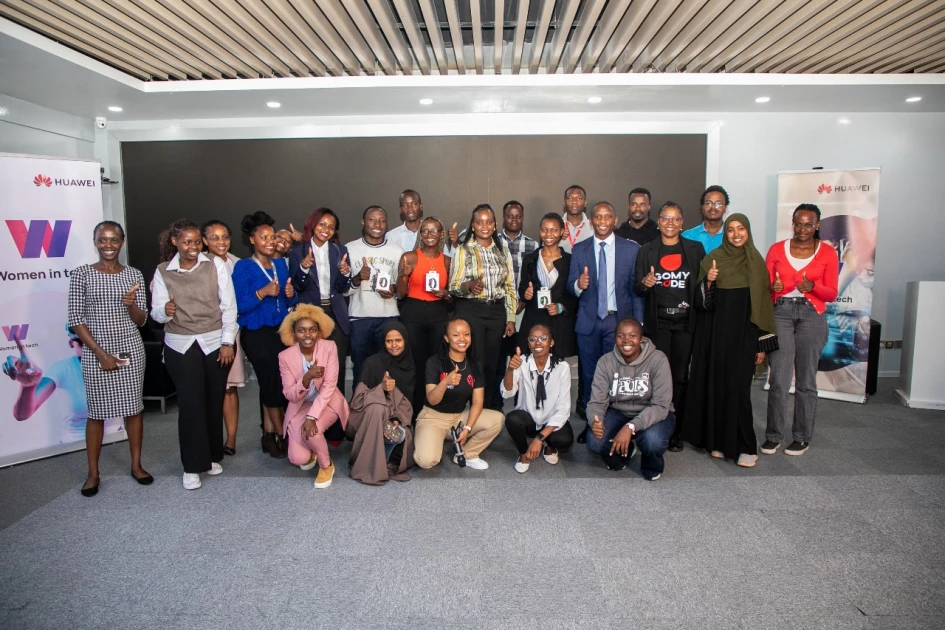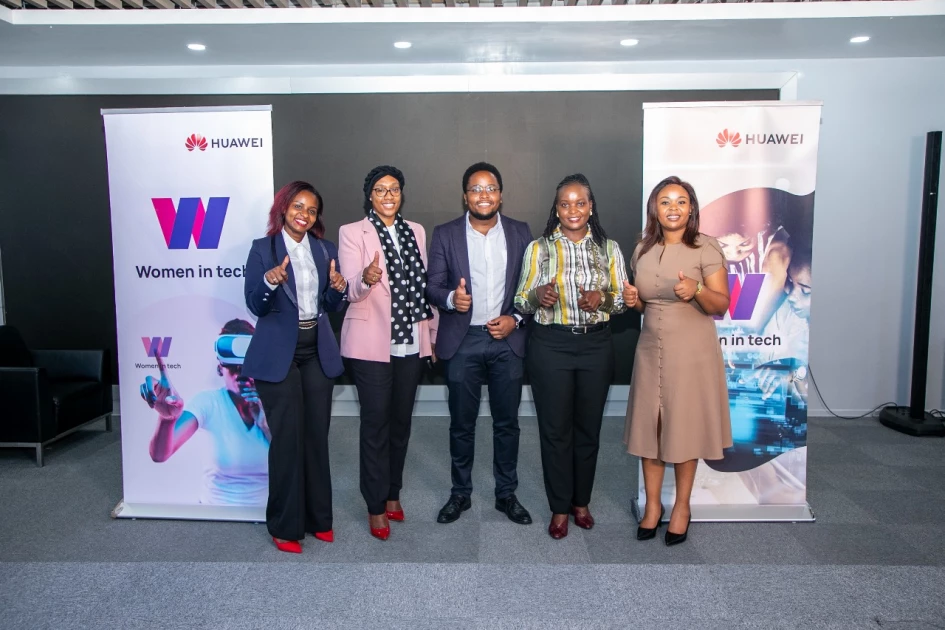Stakeholders deliberate mechanisms for inclusion of women in STEM

Huawei Technologies marks International Day of Women & Girls in Science in Nairobi. Photo/Handout.
According to the United Nations Educational, Scientific and Cultural Organization (UNESCO) only 35% of all students in STEM related fields of study are women as they also occupy minority of top-level positions in the scientific field.
On February 11, the world marked the International Day of Women & Girls in Science with calls for inclusion of women and girls in the STEM field as their exclusion may derail efforts to address global challenges through technological interventions.
The She Figures 2024 report by the European Union detailed the need for gender inclusion in Research and Innovation. It offers a Gender Equality Plan (GEP) that incudes integration of the gender dimension into research and teaching content, gender equality in leadership, decision-making, recruitment and career progression.
“Deprived of adequate funding, publishing opportunities and leadership positions in universities, women and girls continue to face an uphill battle in building careers in science, technology, engineering and math (STEM),” UN Secretary General Antonio Guterres noted in his message on the International Day of Women & Girls in Science.
Kenya’s path to inclusion in STEM
The government of Kenya has made strides to promote STEM initiatives in women and girls through digital infrastructure development, scholarships, mentorship programs, and career guidance.
Harriette Chiggai, the Presidential Advisor on Women Rights advocates for building of a truly inclusive STEM ecosystem where women and girls have equal opportunities to excel.
Speaking in Nairobi during a Women In Technology event by Huawei Technologies, Chiggai noted that women and girls remain underrepresented in the STEM field, both globally and in Kenya.
“Bridging this gap is not just about gender equality—it is about economic empowerment, social transformation, and unlocking untapped potential that will drive our nation toward greater prosperity,” she remarked.
The Presidential Advisor highlighted the role of women in development of diverse perspectives and innovative solutions that enrich science and technology.
“Kenya’s digital transformation and technological advancements must include women at the forefront, leading innovation and shaping solutions that benefit society as a whole,” added Chiggai.

Here, Maggie Gao Junhui, the CFO of Huawei Technologies highlighted the company’s commitment to empowering women in STEM through the companies several initiatives such as Seeds4theFuture and Women in Tech (WIT), which focus on mentorship and leadership development, guiding young women to pursue careers in STEM.
Gao noted that initiatives such as Huawei ICT Competition, DigiTruck, and the annual University Career Fair Platforms aim at recruiting and inspiring young girls to join the tech space. Out of nearly 3,000 students who joined the organisation’s Huawei ICT Competition, about 960 or 32% were girls.
“We recognize that diversity is not just a clause—it is a key driver of success,” said Maggie. “By partnering with universities and corporations, we aim to onboard more women and girls into STEM, ensuring a brighter future for all,” said Gao.
To advance inclusion, Gloria Wawira the National Youth Council CEO encouraged young girls to embrace STEM boldly, and use it to solve the real-life challenges.
“The world of science and technology continues to expand rapidly, offering countless career paths for women— whether it’s artificial intelligence, robotics, medicine, environmental sustainability, coding, or data analysis, there’s something for every interest and every strength,” commented Wawira.
Gender digital divide
It is 2024 Gender Snapshot, UN Women recommended an inclusive, gender-responsive digital technologies to catalyze progress across multiple SDGs.
The study found that building a more inclusive digital ecosystems would accelerate women’s entry into and retention in the digital economy.
“Closing the gender digital divide, education and training, and gender-responsive labour market policies and social protection are critical to address these risks and realize benefits for women and girls from the digital revolution,” it states.
It notes that existing gender barriers limit women’s roles in science, technology and innovation.
“Women are two times less likely than men to know a computer programming language, based on data from 62 countries and areas with data from 2017 or later,” the Gender Snapshot shows.
Want to send us a story? SMS to 25170 or WhatsApp 0743570000 or Submit on Citizen Digital or email wananchi@royalmedia.co.ke
Comments
No comments yet.


Leave a Comment